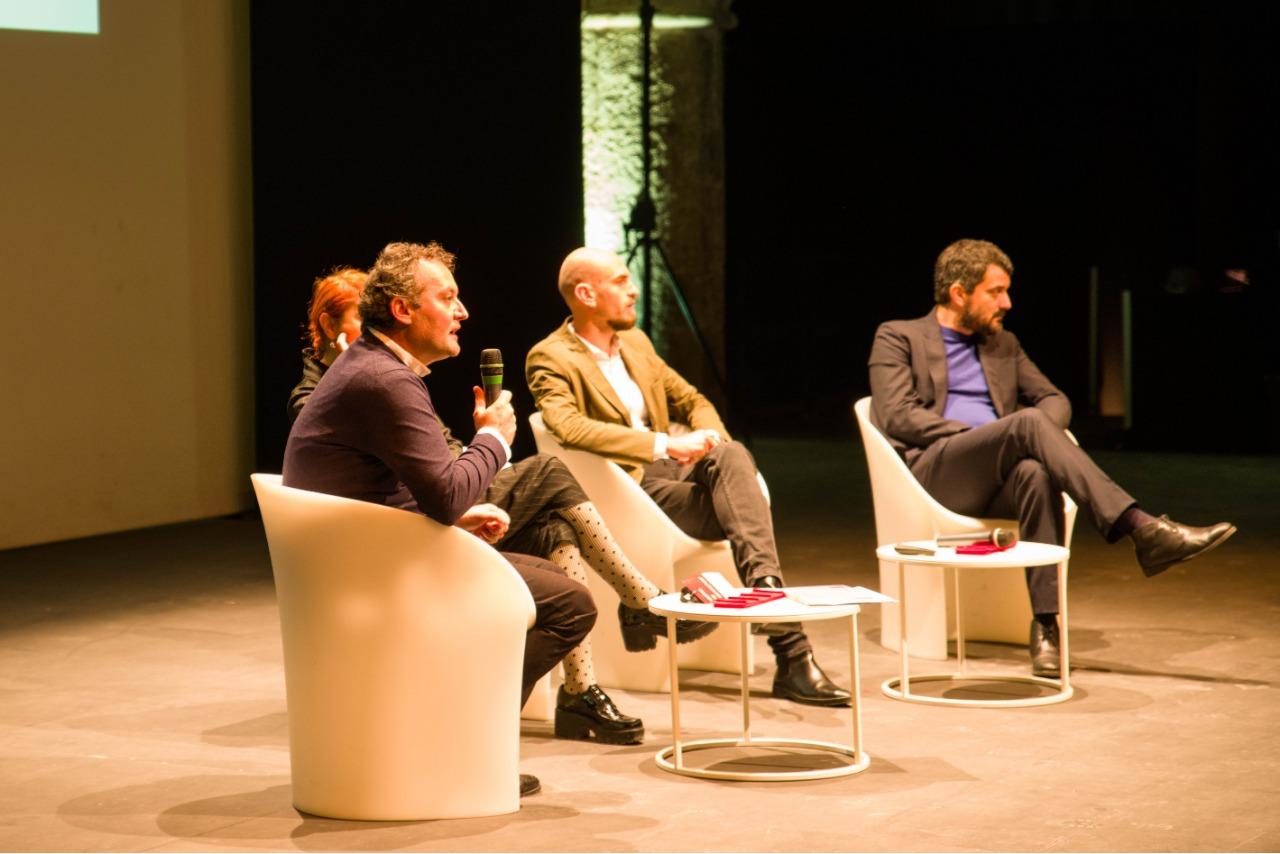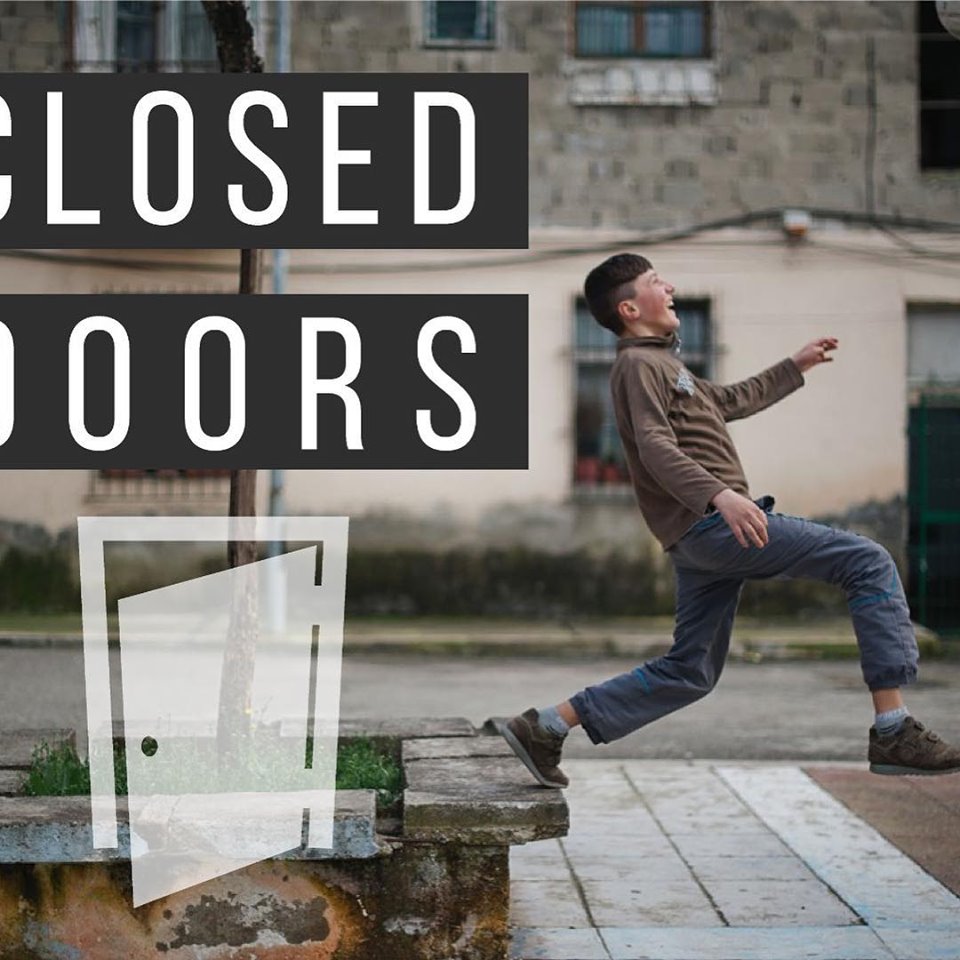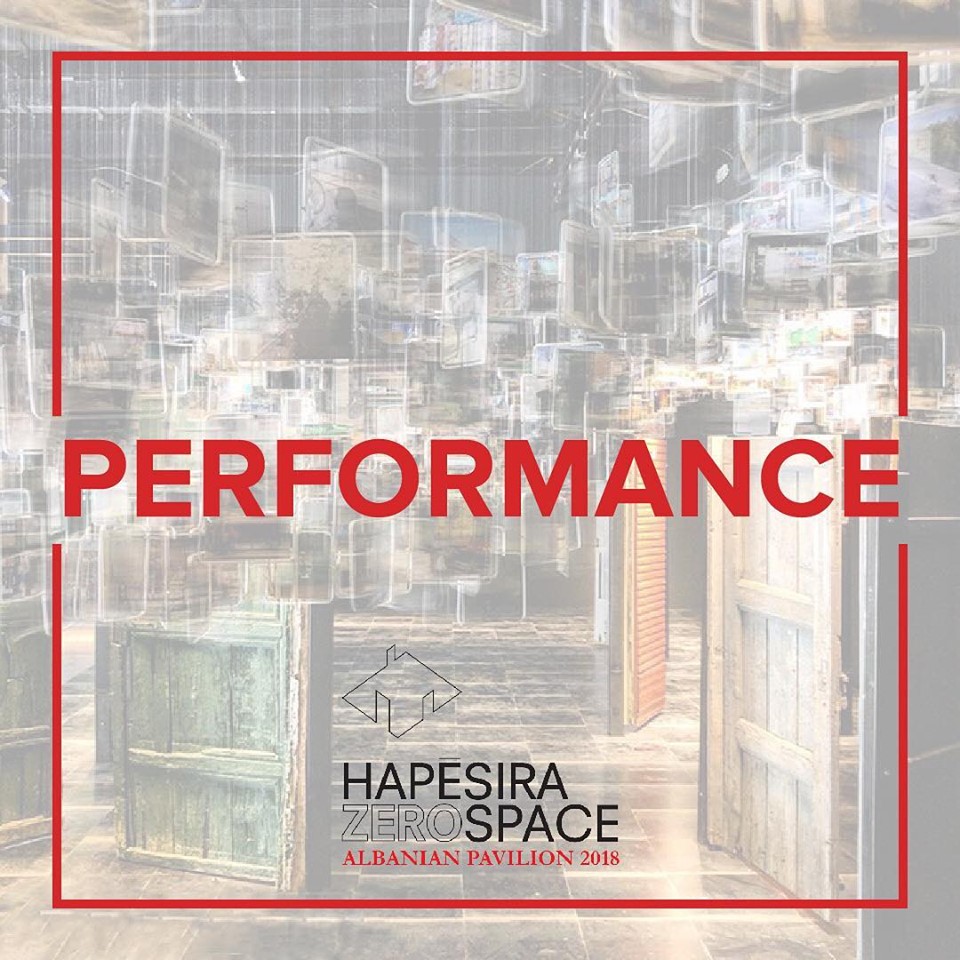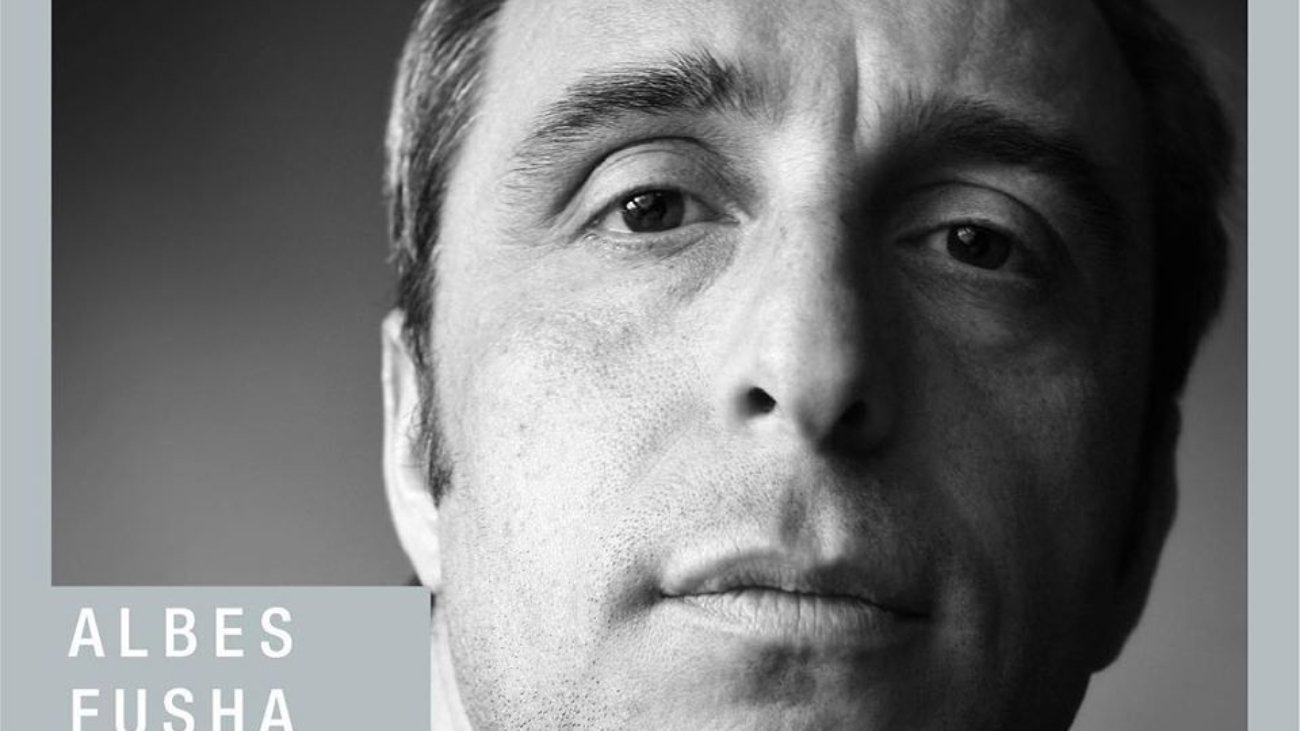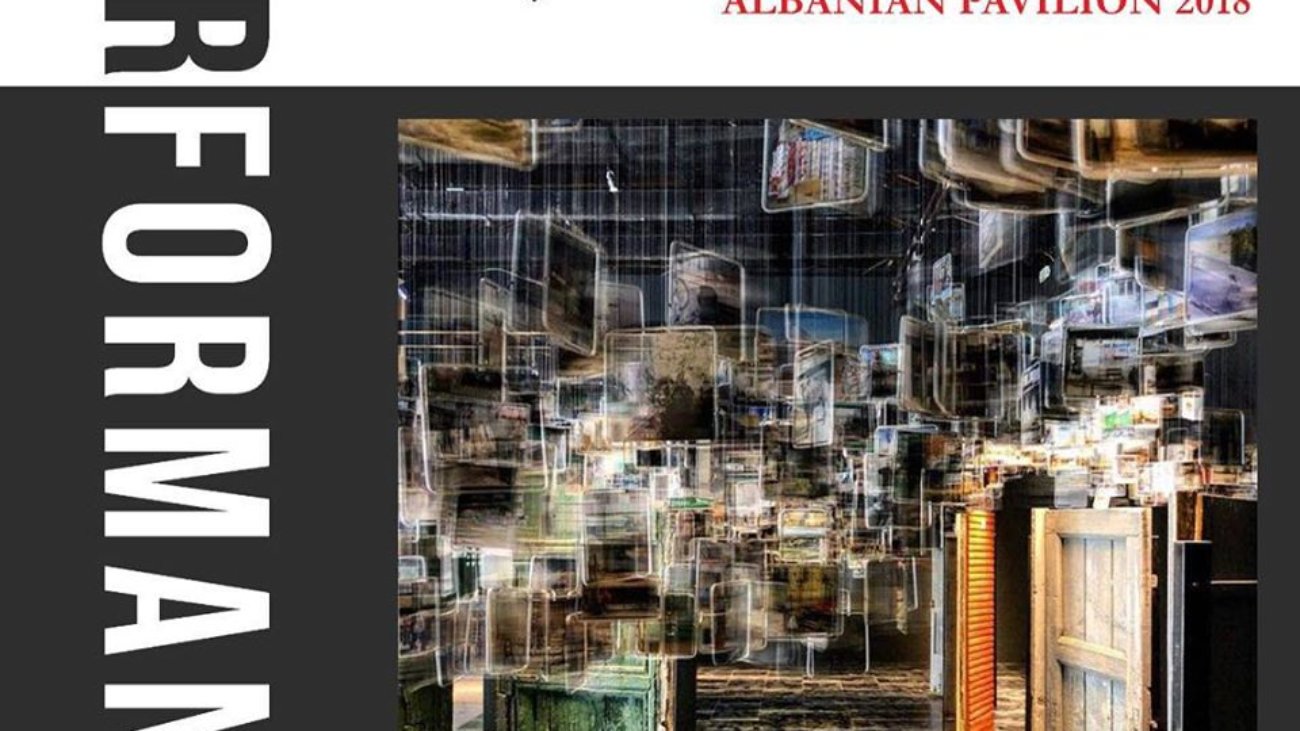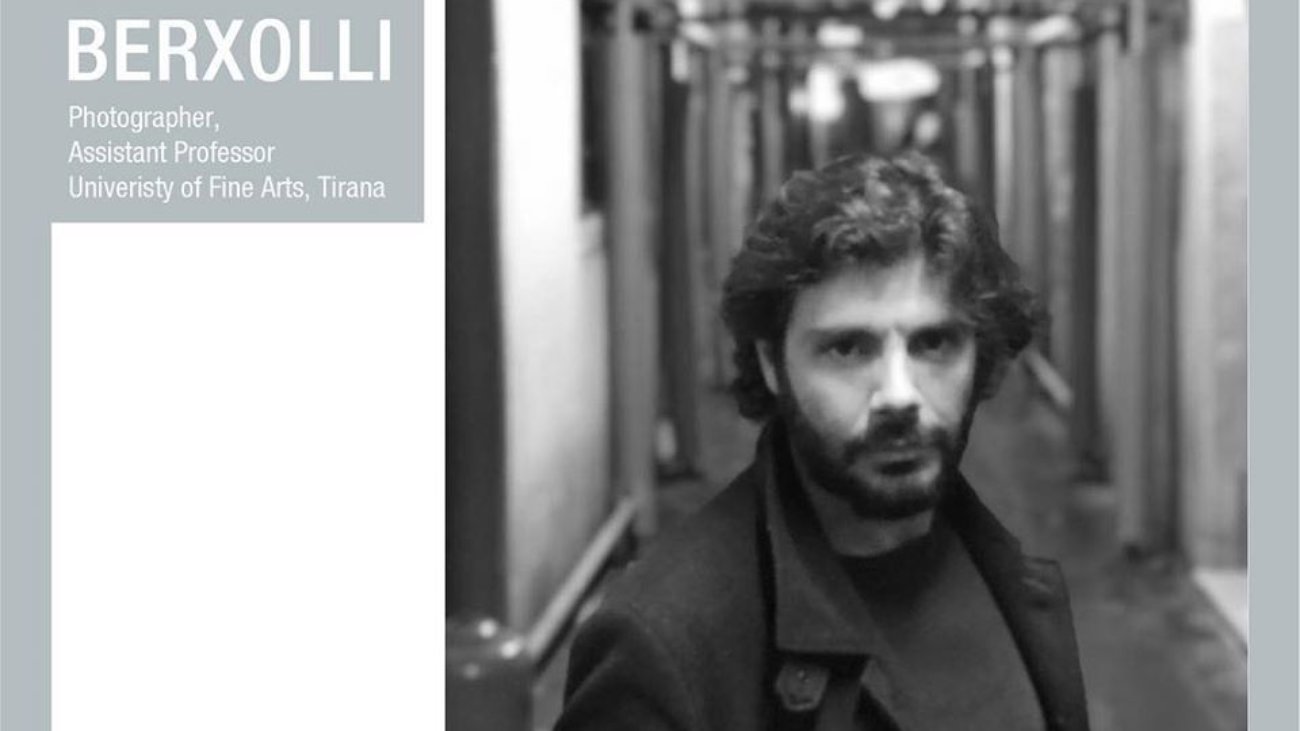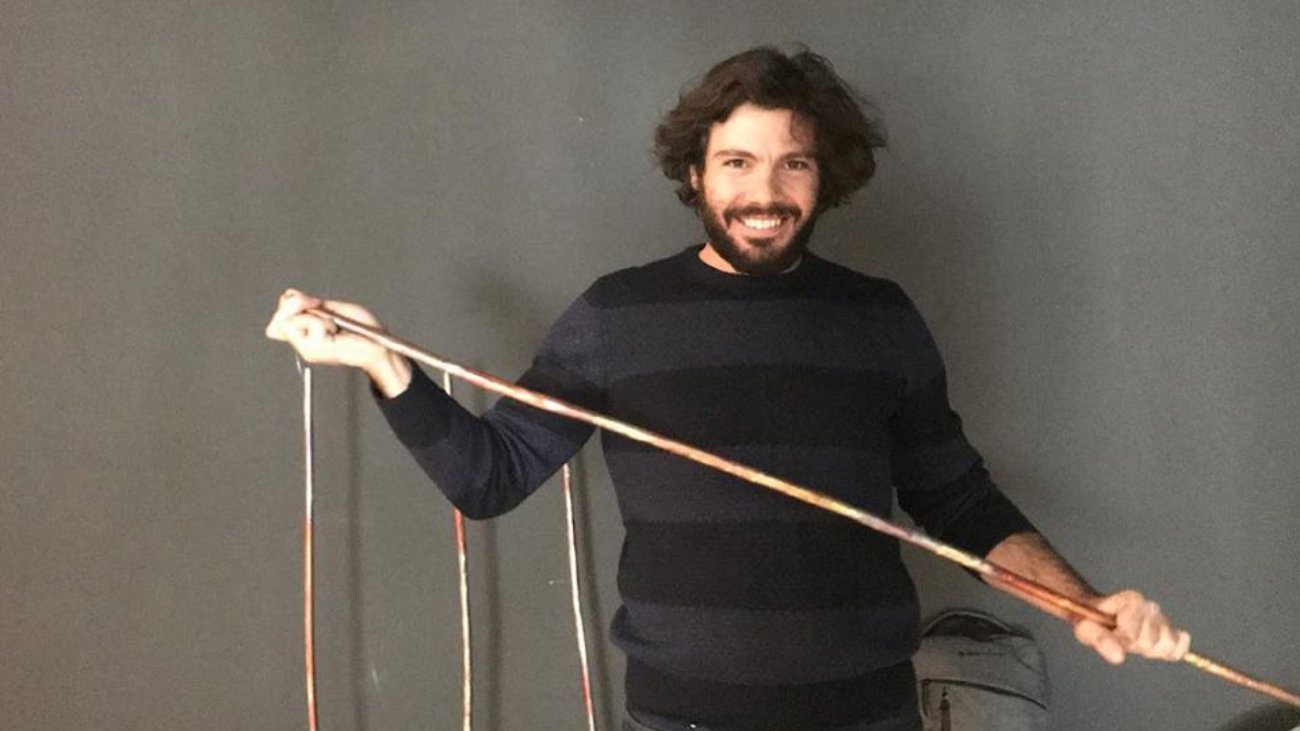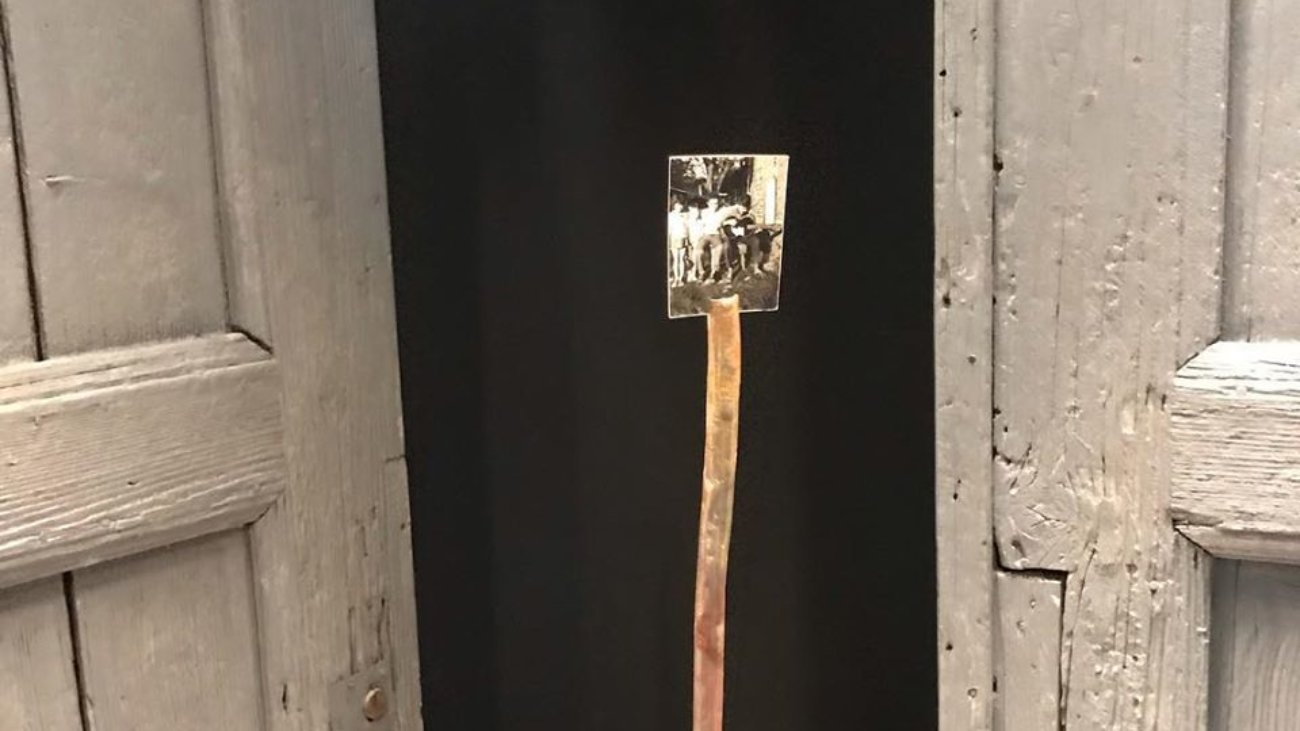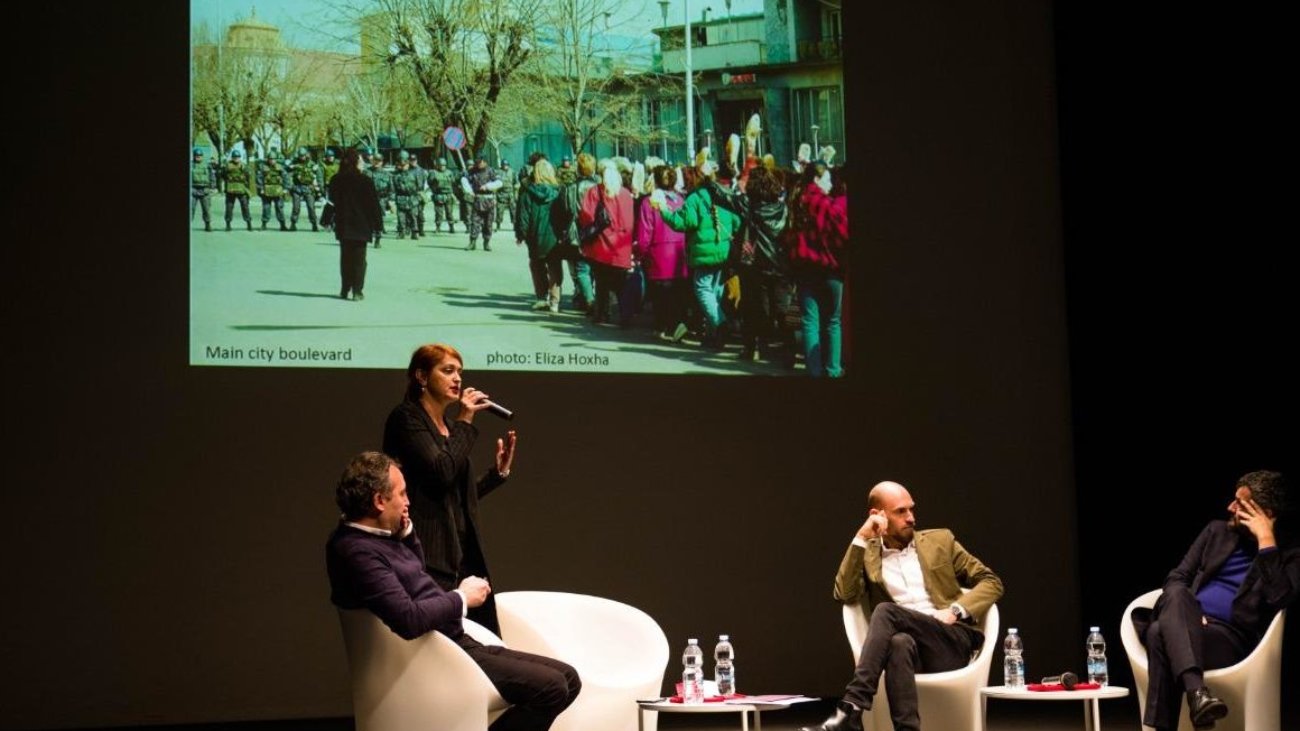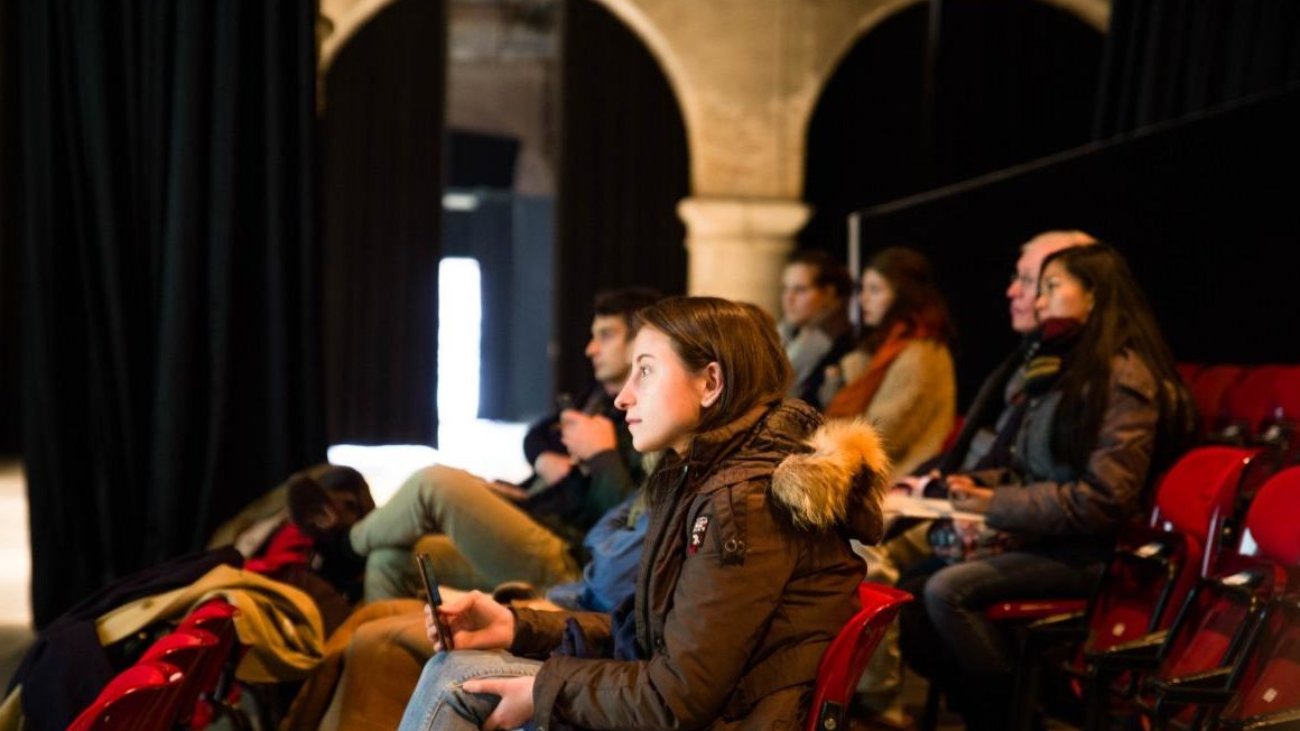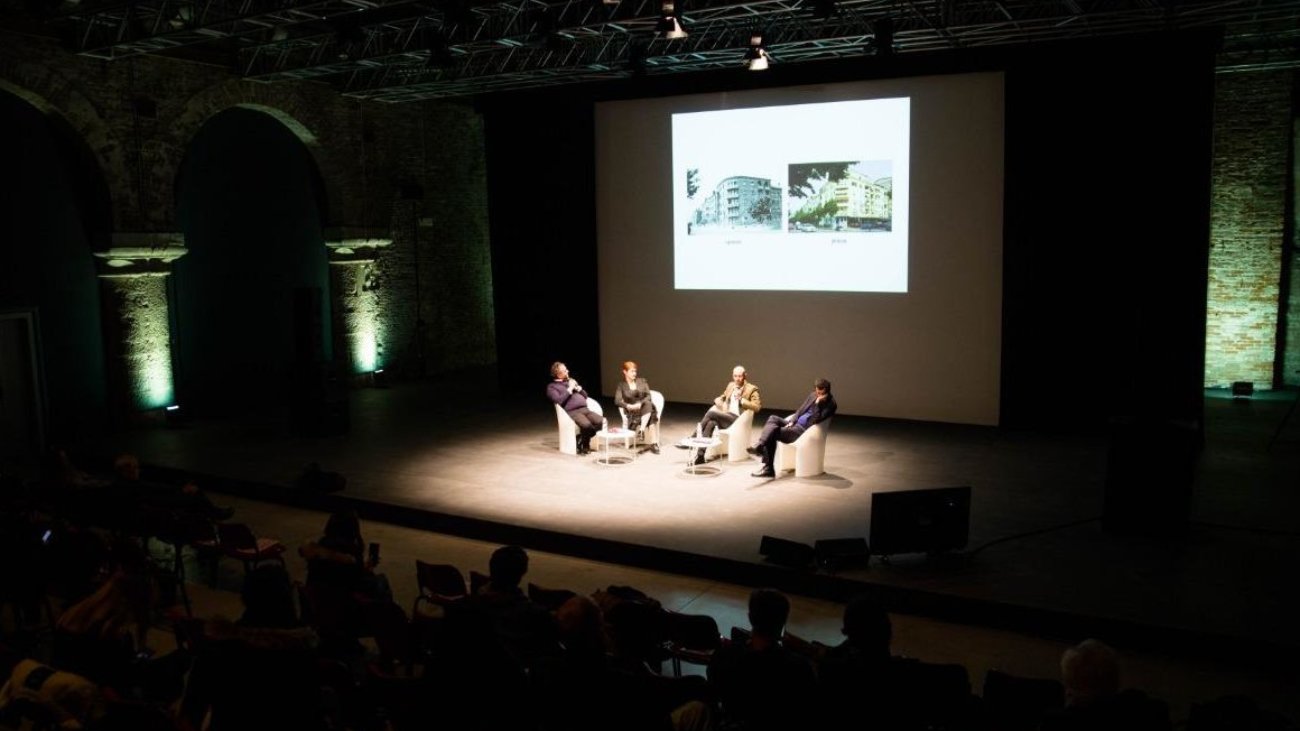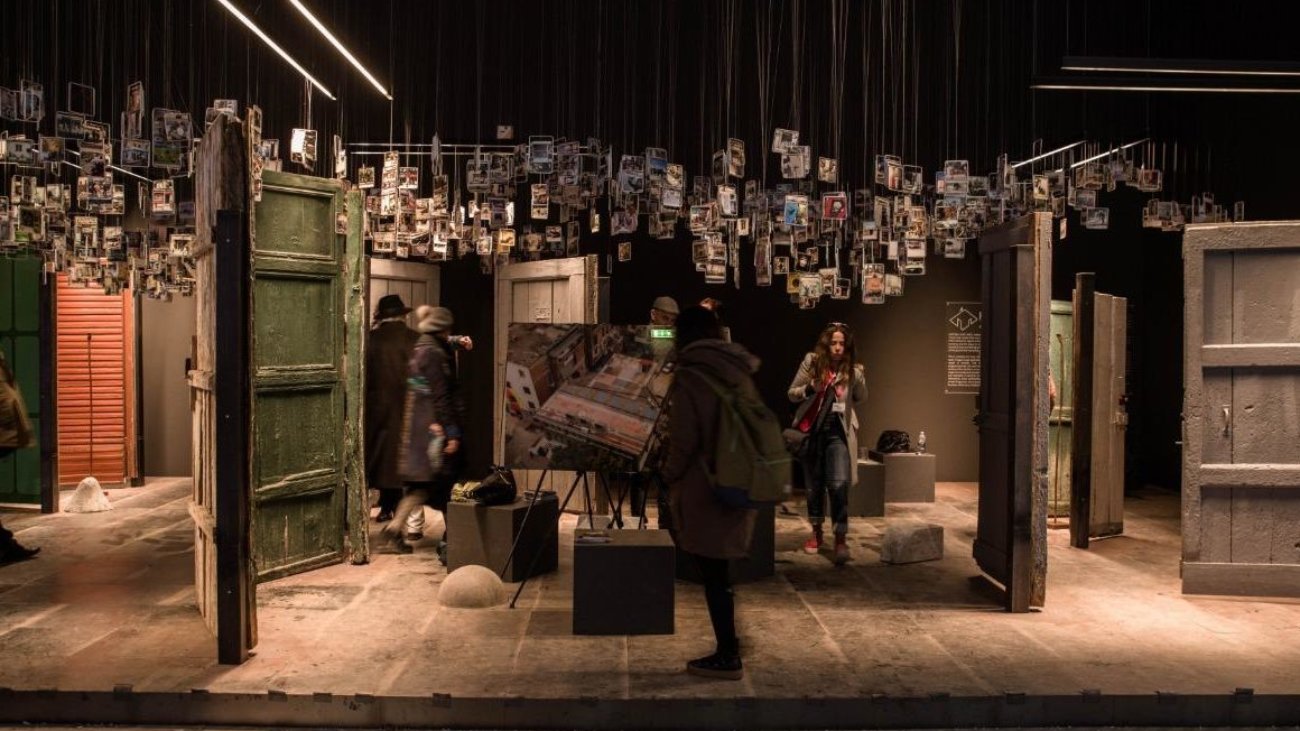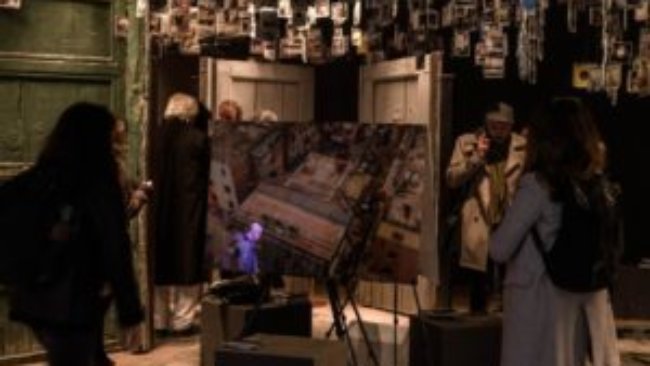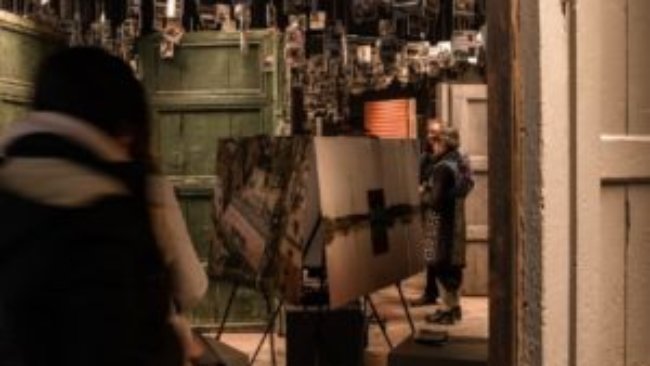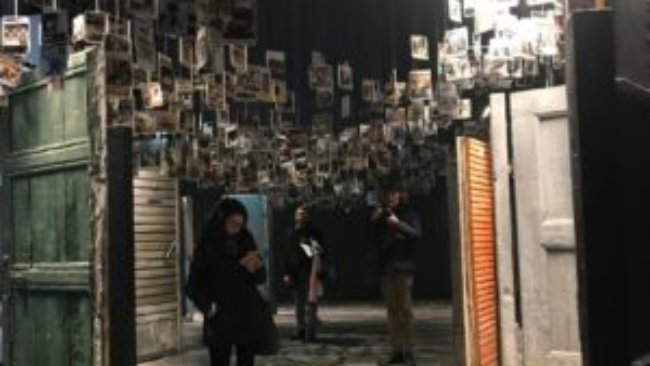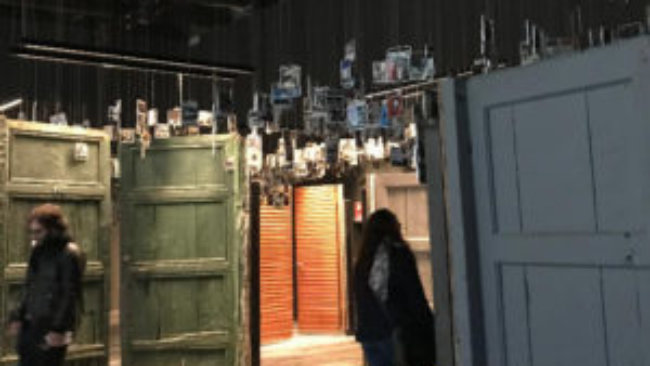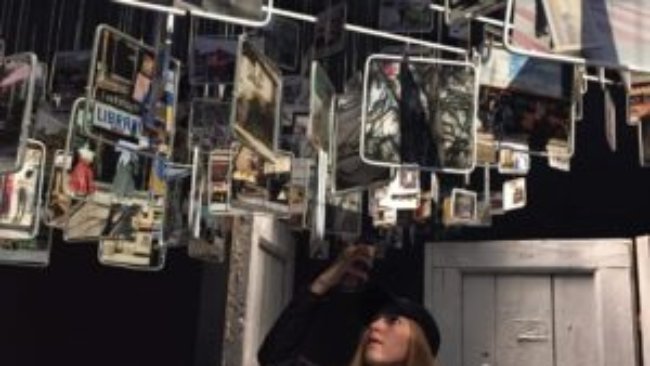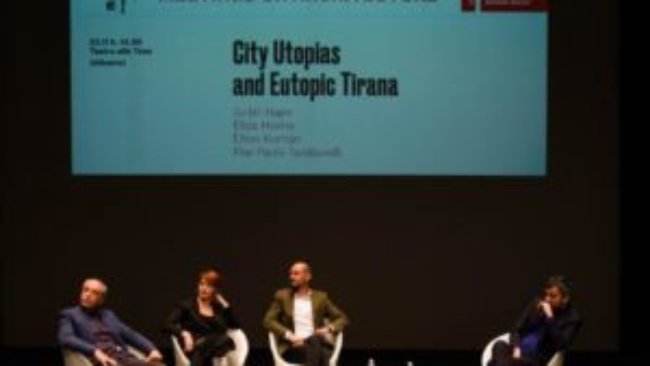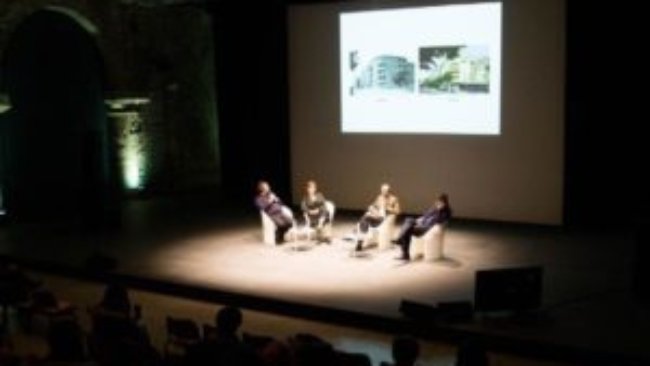Here we are, after six months of the exhibition, we close the doors and as always we did it in a great way. We organize a week full of events and performances. Over all, our Meeting on Architecture, proposed by the Pavilion of Albania and conceived as a discussion platform among the Curators of Albania and Kosovo, Elton Koritari and Eliza Hoxha, the co-author of “Zero Space”, Jurtin Hajro, with the participation of the architect Pier Paolo Tamburelli, the artist Albes Fusha and the public present in the meeting. A performance inside Albanian Pavilion by the artists Ardian Isufi, Albes Fusha and Ervin Bërxolli opened our finissagedays and a video art show, by the artist Yllka Gjollesha, close it. The Albanian Pavilion Meeting on Architecture linked to the similarity of the experiences narrated and the concepts behind the two pavilions (Albania & Kosovo) who express their own models of transformation carried out by citizens during a period of political, economic or social crisis. Fil rouge was the way in which citizens have opened the doors of their private homes to make public spaces, at the service of their city. The transformation in the destination of spaces from private to public represented an urban model of intervention from below, with profound positive implications for the quality of life. The eutopic Tirana (a term created ad hoc to play with the term “utopia” and the ancient Greek prefix “eu” – good, well done), communicates with the heterotopic Pristina looking further and making an original and concrete contribution to the urban models, sometimes utopic and sometimes subjectively pragmatic, but subtly unveiled during the #BiennaleArchitettura2018 #Freespace.On the other part, the performance inside the Albanian Pavilion was conceived as a site-specific project, in perfect harmony with the #HapësiraZeroSpace installation. By complementing and drawing a parallel with Meeting on Architecture, the Albanian artists has created a balanced and interesting performance that coherently dialogues with the Albanian Pavilion at the 16th International Architecture Exhibition – La Biennale di Venezia. In complementary with the performance and the meeting, the documentary “Tunnels Angel” by the artist Yllka Gjollesha closed the Meeting on Architecture in Teatro alle Tese, Venice Arsenale.
Ardian Isufi, Dean of the Faculty of Visual Arts in the University of Arts in Tirana, artist, critic and art curator, presented for the Albanian pavilion 11 free motion/ mobile and autonomous sculptures. These works represent visible objects in the common urban spaces of Albanian cities; small obstacles and blocks used to abusively define private boundaries in public spaces. These objects also reflect the arbitrary relationship between the citizens of the capital and common space. Similar to the way in which the appropriation and privatization of space between the existing buildings on the first floor in Tirana was developed, these abusive objects are transformed by the artist into a metaphor delineating the use of public space by the citizens and the local government, and further on by the central one. These barriers in Albanian cities flourish everywhere, sprouting like urban grass, an action that sets a step forward towards the phenomenon of occupation of the city’s public spaces and a clear indicator of their wild and unregulated management, to the detriment of the people’s freedom as well. The phenomenon is multiplied by social dynamism and indifference which absorbs these phenomena without any reflection on the arbitrarily of interference into common property by the citizens themselves. In a romantic reading, in which even the identity of a city emerges from the picturesque side of its personality, these objects are today an identity piece of the urban landscape of Tirana. Like improvised cement, wooden or concrete mushrooms, chairs on the sidewalk, etc. the objects come out in time, without notice or permission, along the streets of the capital city and other Albanian cities. In this sense, Isufi magnificently sublimates this significance through his mobile sculptures converted into a performance in which the visitor to the pavilion becomes a protagonist himself. Seeking to avoid obstacles and move freely along the pavilion, he experience the direct, annoying, and relatively strong, abusive and wild restrictions of public spaces in Tirana. – Technique: Kinetic resin minisculptures with a maximum height of 30 cm in free motion.
Albes Fusha, professor at the Faculty of Visual Arts in the University of Arts in Tirana, an artist and art curator, was presented in the exhibition with the photography medium, displaying three images with a high communication impact. In particular, works selected by the artist portray the feeling and the state of Albanian society in a very personal and intimate way. A feeling of incompleteness, suspense, which finds configuration in the artist’s search into the basis of a lack of collective coordination and further on, of a constructive and global project with a clear vision. The artist investigates the actions and behavior of the private entities in public life and space. A collage of the autonomous management of public spaces that generates temporary permanence. In this sense, Fusha insists on finding the root of the phenomenon in a lack of corality (collective interaction) to build the city of the future, completely demolishing this desire within a living design that is visibly focused just on oneself and only in the present, here and now. Fusha’s photos become the hyperbole of space-time gap that ultimately generates, according to this view, the phenomenon of zero space presented in the Albanian pavilion. In this prism, the three photographs of the artist, with their imposing size, with the delicacy of composition, but the clear, almost violent message that extremely removes them from being a stylized patchwork of urban reality, fill the space created between the doors in the pavilion by simultaneously giving way to another parallel dimension and bringing in other doubts. There are many open questions in Fusha’s works and it is impossible for the spectator not to be involved in the first person; Does this lack of awareness from below, this brutal individualism and interaction of the citizen with the space come from a lack of coordination from above? Or is it necessary to raise awareness among citizens to become actors and artists of their own space beyond the sense of incompleteness of the individual and society? – Technique: Plexiglas mounted 80x120cm C-Printed photographs.
Ervin Berxolli, lecturer at the Faculty of Visual Arts in the University of Arts in Tirana, an artist, explores the Zero Space phenomenon in a deep way, thus presenting another side of the origin of this phenomenon. Berxolli contributes to this performance with an autobiographical and multisensorial installation consisting of 6 original photographs retrieved from his family album and time-related audio materials. The materials presented therefore come from the family archive and present a moment of social time aggregation, family ceremonies organized precisely in the private spaces of old town dwellings. With an important anthropological and sociological value, this “inside the walls” look allows us to focus attention on another important aspect of the Zero Space phenomenon, which is also the manifesto of the Albanian Pavilion: during these ceremonies and mostly weddings, citizens opened the doors of their houses by temporarily transforming private spaces into public spaces. The small size of the original photographs forces the visitors to approach so as they can focus the content, thus getting in touch with an audiovisual footprint selected by the author in synchrony with the event and being taken back in time. The unexpected involvement of the viewer in the reality of the time provides for a further opportunity for sensory immersion in contradictory and characteristic aspects of private space and administration of public space in Albania. The author’s approach is provocative in this regard, the selected photos show the old city gates that serve as the backdrop to the protagonists of the celebration, sometimes open and sometimes closed, but always as elements that mix the chaos with the cosmos in a city which, decades later, sees exactly those doors turned into a metaphor of its urban transformation. – Technique: Mixed media, installation consisting of six 10x15cm photographs, copper supports and low volume sound system connected to the photographs.
All artists involved in the Closing Doors, like almost all artists involved in entire “Hapësira Zero Space”, are precious collaborators of EJAlbum, in different projects during this years. We remind you the main team of PAVILION OF ALBANIA 2018: Commissioner: Mirela Kumbaro, Minister of Culture of the Republic of Albania. Partner: Tirana Municipality and the Mayor of Tirana Mr. Erion Veliaj. Exhibitors: Varka Arkitekturë, commonsense.studio, Fablab Tirana. Curator: Elton Koritari / EJAlbum. A large team of almost 100 people worked for this project, and we are thankful to all for this amazing experience.
Ready for other doors to open!



